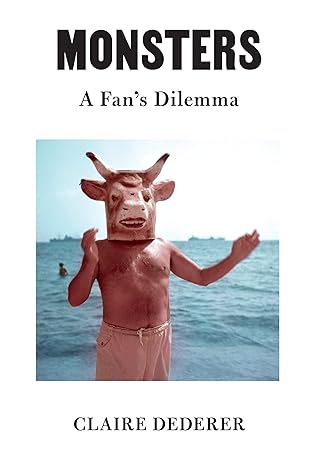More on this book
Community
Kindle Notes & Highlights
wanted to be a virtuous consumer, a demonstrably good feminist, but at the same time I also wanted to be a citizen of the world of art, a person who was the opposite of a philistine.
Even the patriarchs were sick of patriarchy.
The feminism I knew of was a feminism that found fault. That pointed—j’accuse. As I understood it, there were two ways of being: you could be a feminist who called men monsters, or you could ignore the problem.
The stain is simply something that happens. The stain is not a choice. The stain is not a decision we make. Indelibility is not voluntary. When someone says we ought to separate the art from the artist, they’re saying: Remove the stain. Let the work be unstained. But that’s not how stains work.
Obsession, real obsession, is not how you feel about labradoodles or Cool Ranch Doritos or even something truly great, like the poems of Richard Siken. Real obsession has tendons and guts and, and, and consequences.
What makes great art depends on who we are and what we live through. It depends on our feelings.
We each bring our subjective experience to art and to love. If I were to give an exhaustive list of monsters and tell you my response to them, I would be acting out a kind of falsehood. I would be suggesting there is a correct answer in each particular case. I would be telling you what to think, and, in telling you what to think, I would be telling you what to do. And I don’t want to enshrine my own subjectivity in that particular way; don’t want to cloak it in the garb of authority.
Genius is the name we give our love when we don’t want to argue about it; when we want our opinion to become fact.
If you are handsomely rewarded for giving in to some of your impulses, doesn’t it begin to seem like all your impulses ought to be honored? Especially because it’s hard to tell the good from the bad. Why would you quash an impulse, no matter how savage or destructive, when it might be one and the same thing as the impulse that allows you to do this mysterious, free thing that everyone says is genius?
Vitality, potency, loudness—is it any accident that we call important works of art seminal?
It’s hard not to participate in a kind of fantastical utopianism when it comes to thoughts like these—if we could get rid of the gnarly old men, we’d live in an innocent world of good people making good art.
The sometimes-truth is that we are interested in and, yes, even attracted to bad people. When the latest news comes out and we’re all aflutter with outrage, we’re ignoring a truth: Part of the reason so much attention has been trained on men like Picasso and Hemingway is exactly because they’re assholes. We are excited by their asshole-ness. Wasn’t that what we saw with Trump? We kept pointing out, over and over: This guy is an asshole. And of course that was what people loved about him in the first place.
Memoir is, at its worst, a long howl about one’s own specialness.
A person’s identity does not automatically make them bad; and it does not automatically make them good either. I don’t think that if institutions start supporting women and people of color and queer people and trans people, all those people will turn out to be good. But I do think the institutions will be better, simply because they will be fairer.
The truth is, art-making and parenthood act very efficiently as disincentives to one another, and people who say otherwise are deluded, or childless, or men.
According to Solanas, deep down each man “knows he’s a worthless piece of shit.” In an attempt to compensate for his inadequacy, Solanas’s man dominates the family, the workplace, and, through his war-making, the world.
It is easier to imagine the end of the world than the end of patriarchy.
Drinking and drugging are a shit solution in the long run, but in the short run they are extremely effective strategies for managing Bad Feelings.


